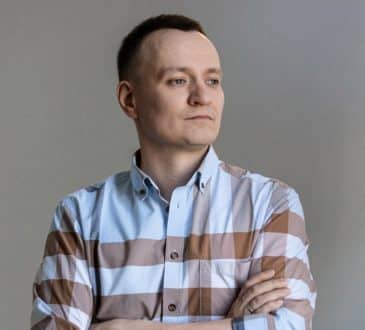Who Should Get to Decide How and Where we Work?

The Work from Home (WFH) movement is beyond here to stay. It’s a fact of life and a reality for a large minority of workers worldwide. But while WFH has become “old hat,” there is still a lot to learn and a lot more to work out to ensure employees are working in the conditions they prefer. And a lot of what needs to be determined is largely based on the industries in which these employees work.
Last year, the chart below detailing, by industry, the percentage of the workforce that was working remotely vs. the percentage that wanted to work remotely came out from the Boston Consulting Group. While there are some jobs that cannot be done remotely vs. some that can absolutely be done remotely, the discussion about where the company wants you to work vs. where you want to work is fundamentally the wrong question.
Many companies stayed away from remote work in the past because figuring out how to manage remote workers can be messy. Executive teams are faced with questions like “Are you really working? How do I keep a remote employee engaged as an employer? How do we hold remote staff accountable? How do we make sure remote employees feel connected and part of the team?” All come to mind.
Missing the Big Picture
I think this misses the bigger picture. Why do companies have employees in the first place? To do stuff. But what stuff exactly? The short answer is stuff that ultimately creates revenue or value for the company.
On a slightly off but related tangent, why do we buy computers, dual monitors, expensive software, servers, build data centers, and give untold amounts of money to Microsoft, among others? Because employers want employees to be productive and generate more value than they technically cost so that there can be a profit for all the hard work and risk that goes into making a business work.
If it were just about minimizing cost, we would give every employee #2 pencils and tablet for $1.34 instead of the $1,000 we spend per employee setting them up with the computers, software, and other equipment they need to do their jobs (Gartner estimated an average of $2,400/year maintaining them going forward).
So, what should really drive where an employee works? The person who signs the paycheck or the person doing the work?
Maybe the real answer to these questions is neither.
The person who should drive where an employee works is the person paying for the work, the customer. Ultimately that is what we all show up for work for, right? To make something, do something, sell something to solve someone else’s problem or to make someone else’s lives better, that’s ultimately what we do day-in and day-out.
COVID demonstrated that everyone, pretty much, can work without being chained to their desks. So, what possibilities does that open? No one said remote work has to mean work from home. It could mean work from wherever is makes sense to best take care of your customers – the people that keep the business viable and allow you to make payroll every two weeks.
It could mean work from wherever your key suppliers are to make sure the components arrive at factories on time to keep the assembly line flowing. It could mean work from a temporary job site, keeping a close eye on critical development efforts. It could mean putting bank employees in a park at a public event, meeting new people and opening new accounts while demonstrating support for the community.
Old Habits vs. New Ways
It is easier to go back to our old habits and the way we did things in the past. We have years, if not decades, of history doing things that way. It is hard to break old, tried-and-true habits and create new tools and processes to manage people that are not within the line of site of their bosses. Easy or hard, what makes sense? It was probably easier to continue hitching horses to wagons to get work done instead of learning how to operate a truck. But that did not diminish the value or impact of the technology.
Do all businesses really need the overhead that comes with renting an office? Do we all need fancy lobbies, pretty artwork on the walls, marble floors, or artsy exposed ceilings with lighting designed by architects? Some do. Others would be better off redirecting that investment.
For employees not in roles that require them to be in the office, where could they be working to maximize their value to the company, be happier, and more productive? The ability to untether an employee and strategically place them anywhere in the world where there is a good internet connection can be incredibly powerful and a win for both the company and employee.
The technology is there and, at least according to the chart, there is a willingness from employees to consider an alternative working arrangement. The only thing missing is taking the time to view the business through this new lens and rethink how the business might function with the capability to put employees almost anywhere to better serve the needs of the business or the customer.
Learn, Adapt and Improve
What might that look like? One U.S. based architecture firm has embraced this approach by hiring the brightest minds they can find. Not just the brightest minds that happen to live in or near the cities where they have offices or where prospective employees are willing to relocate to. They are not a huge firm but are well known in their industry for the work they produce, and it is all built on the back of hiring the best talent they can find, regardless of where in the world that talent might call home.
The rest is a technical challenge around how to connect all this talent in a meaningful way to continue to advance the mission of the firm. No bleeding-edge technology in play here. Just a unique application of technologies allowing this firm to connect the best and brightest they can find to deliver their award-winning projects, then reconfigure their groups virtually for the next set of projects, and going again, with staff spread out around the world instead of around the office.
The capability is there to meet the employee on their terms, in their context, and build an environment around them that will allow them to engage and connect with their peers in meaningful ways. It just takes effort to look at how business really gets done and explore these ideas thinking about what might be possible.
Community outreach organizations have taken their offices with them into the streets of large urban communities to better serve and meet the needs of their customer, a homeless person, in their environment.
Ambulance services and hospital systems equip vehicles with the ability to put a provider onsite via video conferencing/telemedicine technology at an ambulance call to assist and advise paramedics in the direct care of stroke patients, working together to treat the patient and minimize the risk of permanent damage to the patient.
The capability is there to meet the needs of clients in new and unique ways, looking beyond if it is best to have employees working from home or working in the office. The technology is there to allow employees to work from wherever it makes sense for the organization. But the willingness to change how we measure and engage with employees must be there in these new work scenarios to capitalize on this capability.
Many organizations have already embraced the lessons of COVID, replacing short-term, stop-gap work from home solutions with more permanent changes to how they do business, and are being rewarded for it. It is exciting to watch companies take the worst of the last two years, learn, adapt, and make themselves better in 2022 for the experience.
Written by Val King.
Have you read?
How to Prepare Procedures to Deal With Underperforming Remote Employees.
How Tarla Makaeff Went from Copywriter to Seven-figure CEO Using Mindset and Manifestation.
Why the great resignation can be stopped with a great conversation by Rebecca Houghton.
Elon Musk’s Authoritarianism on Returning to the Office Undermining Tesla’s Future by Dr. Gleb Tsipursky.
Add CEOWORLD magazine to your Google News feed.
Follow CEOWORLD magazine headlines on: Google News, LinkedIn, Twitter, and Facebook.
Copyright 2024 The CEOWORLD magazine. All rights reserved. This material (and any extract from it) must not be copied, redistributed or placed on any website, without CEOWORLD magazine' prior written consent. For media queries, please contact: info@ceoworld.biz









